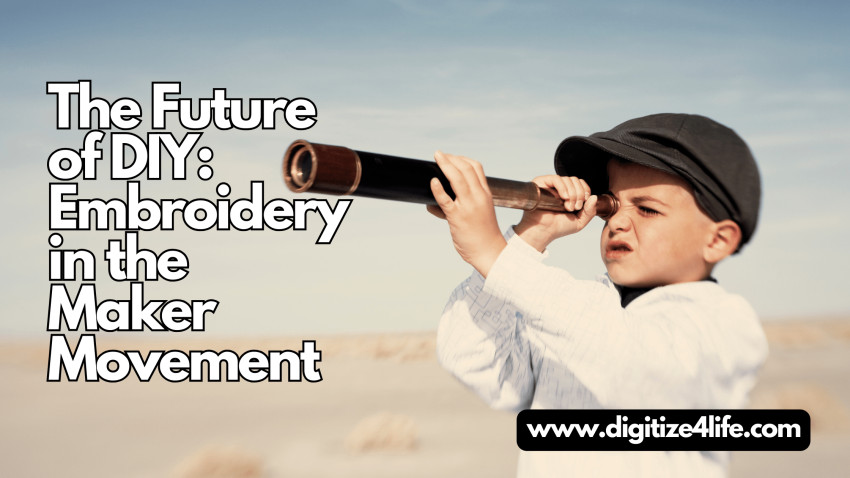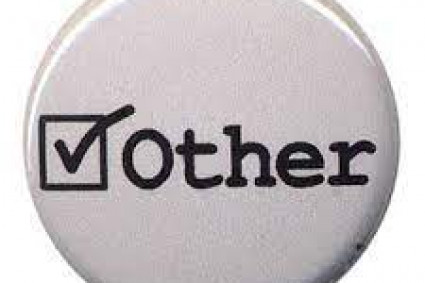
Introduction:
The DIY lifestyle has gained recognition over the past decade as a collective choice driven by creative expression, sustainability and community. Within this vibrant movement, embroidery has created huge interest, mixing lifestyle with innovation. As technology advances and creative communities thrive, the future of DIY embroidery is more dynamic and influential than ever. In this blog, we explore how embroidery is evolving in the Maker Movement, how it crosses generations, and how it has the power to shape the destiny of a DIY life.
The Development of Embroidery in the Maker Movement
For thousands of years ago, embroidery has always represented a high level of art and personal expression. Traditionally associated with hand-stitched styles on fabric, embroidery is now experiencing a renaissance in the Maker Movement. This revival is characterized by the fusion of traditional techniques with state-of-the-art equipment and materials, ushering in a new wave of creativity.
The maker movement, a cultural movement that emphasizes creation, handcraft and DIY, has embraced embroidery for its versatility and tactile experience. Craftsmen and makers are drawn to the practicality of embroidery, which allows for precise detailing and customization. This movement appreciates the uniqueness and personality inherent in every embroidered work.
Technology and DIY Embroidery: The Perfect Match
One of the most exciting parts of the future of the Maker Movement embroidery industry is its intersection with technology. The integration of virtual devices and resources is reshaping the design, creation and sharing of embroidery. Here are some of the major technological advances that will shape the future of DIY embroidery:
Digital Embroidery Machines
Digital embroidery machines have revolutionized the craft, offering precision, speed and versatility. These machines can be programmed to sew intricate details, allowing manufacturers to experiment with complex styles and textures. The ability to add virtual models means that the creative possibilities are definitely endless.
Design Software
Embroidery design software has become a valuable tool for DIY fanatics. Programs such as Adobe Illustrator and specialized embroidery software allow designers to create and customize designs. This technology bridges the gap between virtual art and physical creation, making it easy for special people to transform their innovative visions into embroidered masterpieces.
Online Communities and Resources
The web has grown an international embroidery base that measures ideas, strategies and concepts. Platforms like Instagram, Pinterest and special boards allow creators to communicate, collaborate and explore from every angle. Online tutorials, webinars and digital workshops have democratized access to embroidery training, giving crafters a new era of opportunity.
The Creative Potential of DIY Embroidery
Embroidery has resurfaced in the Maker Movement and the devices and strategies are somewhat familiar; it’s also about the limitless creative potential that craft offers. Here are some approaches where embroidery pushes the limits of creativity itself:
Artistic Expression
Embroidery allows for excessive artistic expression. Makers can experiment with unusual stitches, threads and fabrics to create special textures and results. The tactile experience of embroidery provides a sensory pleasure that virtual art cannot reflect, making it an enjoyable medium for creative exploration.
Personalization and Customization
One of the hallmarks of the DIY movement is the emphasis on customization. Embroidery is perfect for creating custom accessories, from clothing and accessories to home décor and gifts. Artists can add private stories, symbols and messages to their paintings, resulting in works that are just that.
Recycling and Sustainability
The Maker Movement is closely related to sustainability and embroidery works well in this component. Makers often use embroidery to repurpose and revive old or discarded items, giving them new life and reducing waste. This practice is in keeping with the DIY ethos of ingenuity and creativity.
Embroidery as a Community Tool
In addition to creativity, embroidery is an effective tool for forming and strengthening groups. The community element of embroidery manifests itself in many ways:
Craft Circles and Workshops
Local craft circles and workshops allow makers to gather, share talents and collaborate on projects. These meetings promote a sense of togetherness and mutual help, which is crucial for Tekijäliikke. The tactile and meditative nature of embroidery makes it a great hobby for these community spaces.
Social Media and Virtual Communities
Social media systems have multiplied the scope of embroidery communities and connected creators worldwide. Hashtags like #EmbroideryArt and #DIYEmbroidery create digital galleries where makers can showcase their work and explore concepts. These online groups provide connection and encouragement, especially for people who may not yet have access to vocational offices nearby.
Collaborative Projects
Collaborative projects, including community quilts or public artworks, emphasize the collective power of craft. These projects often deal with social and cultural issues and use embroidery as a medium for storytelling and activism. By working together, authors can amplify their voices and influence quality exchange.
The Future of DIY Embroidery
Looking to the future, the role of embroidery in the Maker movement is growing and evolving in an exciting way. Here are some trends and opportunities to watch:
Integration with Emerging Technologies
DIY embroidery is likely to integrate with new technologies consisting of augmented reality (AR) and digital technology. the truth (VR). These techniques can provide new methods for visualizing and designing embroidery tasks, improving creative techniques. Innovations in smart textiles and conductive yarns should also lead to interactive and purposeful embroidered pieces.
Interdisciplinary Collaboration
Embroidery is increasingly taking place in interdisciplinary projects that fuse style, interior design and high-quality art. Collaboration between creators, designers and artists can push the boundaries of embroidery technology, resulting in revolutionary and surprising creations.
The Emphasis on Sustainability Continues
Sustainability continues to be the driving force behind the Maker Movement, and embroidery plays a key role in promoting eco-friendly practices. Manufacturers are exploring new ways to use recycled materials, natural dyes and sustainable yarns. An emphasis on reuse and conscious use remains central to the DIY mentality.
Education and Sharing of Skills
The democratization of embroidery education continues, and online platforms and virtual resources make it easier for people to discover and improve their talents. Upgrading DIY kits with materials and instructions also lowers barriers to entry and encourages others to try embroidery.
Summary
Embroidery is a timeless skill that is finding new ways of life in the Maker Movement. Connecting generations, fostering creativity and building communities, embroidery is poised to play a huge role in the destiny of DIY culture. When creators preserve and push the boundaries of what thread and material can do, the possibilities for innovation and personal expression are endless. Whether you are a professional embroiderer or a curious beginner, DIY embroidery offers a rich and provocative landscape. So pick up a needle and thread and become part of a movement that connects creativity past, present and destiny.





